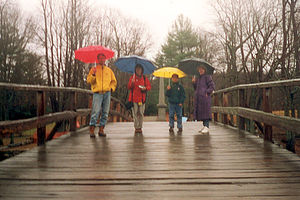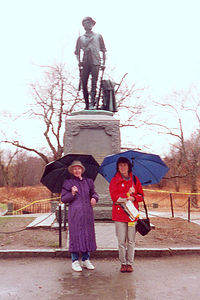- Home
- About
- Map
- Trips
- Bringing Boat West
- Migration West
- Solo Motorcycle Ride
- Final Family XC Trip
- Colorado Rockies
- Graduates' XC Trip
- Yosemite & Nevada
- Colorado & Utah
- Best of Utah
- Southern Loop
- Pacific Northwest
- Northern Loop
- Los Angeles to NYC
- East Coast Trips
- Martha's Vineyard
- 1 Week in Quebec
- Southeast Coast
- NH Backpacking
- Martha's Vineyard
- Canadian Maritimes
- Ocracoke Island
- Edisto Island
- First Landing '02
- Hunting Island '02
- Stowe in Winter
- Hunting Island '01
- Lake Placid
- Chesapeake
- Provincetown
- Hunting Island '00
- Acadia in Winter
- Boston Suburbs
- Niagara Falls
- First Landing '99
- Cape Hatteras
- West Coast Trips
- Burning Man
- Utah Off-Roading
- Maui
- Mojave 4WD Course
- Colorado River Rafting
- Bishop & Death Valley
- Kauai
- Yosemite Fall
- Utah Off-Road
- Lost Coast
- Yosemite Valley
- Arizona and New Mexico
- Pescadero & Capitola
- Bishop & Death Valley
- San Diego, Anza Borrego, Joshua Tree
- Carmel
- Death Valley in Fall
- Yosemite in the Fall
- Pacific Northwest
- Utah Off-Roading
- Southern CA Deserts
- Yosemite & Covid
- Lake Powell Covid
- Eastern Sierra & Covid
- Bishop & Death Valley
- Central & SE Oregon
- Mojave Road
- Eastern Sierra
- Trinity Alps
- Tuolumne Meadows
- Lake Powell Boating
- Eastern Sierra
- Yosemite Winter
- Hawaii
- 4WD Eastern Sierra
- 4WD Death Valley +
- Southern CA Deserts
- Christmas in Tahoe
- Yosemite & Pinnacles
- Totality
- Yosemite & Sierra
- Yosemite Christmas
- Yosemite, San Diego
- Yosemite & North CA
- Seattle to Sierra
- Southwest Deserts
- Yosemite & Sierra
- Pacific Northwest
- Yosemite & South CA
- Pacific Northwest
- Northern California
- Southern Alaska
- Vancouver Island
- International Trips
- Index
- Tips
- Books
- Photos/Videos
- Search
- Contact
Minuteman National Historic Park, MA
Saturday, November 27, 1999 - 3:00am by Lolo
36 miles and 0.75 hours from our last stop
Travelogue
I love American history of all periods, but I must say that I find the American Revolution the most fascinating. What better way to feed this interest than a visit to the place where it all began: Lexington and Concord.
 Gang on Old North BridgeMinuteman National Park is actually broken into three separate sections. The larger section is the part in Lexington consisting of the Minute Man Visitor Center, several historic homes and taverns, and the Paul Revere Capture site, among other points of interest. The 5-mile pedestrian Battle Road Trail runs through the entire length of this section of the park. Much of this trail follows the original Battle Road, which the defeated British troops took as they left Concord.
Gang on Old North BridgeMinuteman National Park is actually broken into three separate sections. The larger section is the part in Lexington consisting of the Minute Man Visitor Center, several historic homes and taverns, and the Paul Revere Capture site, among other points of interest. The 5-mile pedestrian Battle Road Trail runs through the entire length of this section of the park. Much of this trail follows the original Battle Road, which the defeated British troops took as they left Concord.
A very small section of the park slightly to the west contains the historic Wayside, which was the home of three different families of authors during the 19th century: Louisa May Alcott, Nathaniel Hawthorne, and Margaret Sidney).
The third section, which was the one we chose to visit on this rainy day, was the Concord section. We started our visit at the North Bridge Visitor Center, a beautiful old brick mansion overlooking the Concord River and the Old North Bridge. Ironically, this mansion was built by the descendants of Major John Buttrick, the colonial officer who first ordered his militia to fire upon the British soldiers. The visitor center had some interesting exhibits including uniforms and weaponry of both the colonial and British army. Its most prized exhibit, however, was a brass cannon, called "The Hancock." This cannon had a lot to do with the start of the war. The American militia had smuggled it out of Boston in 1775 and hidden it in Concord. The British General Gage ordered his troops to go to Concord and find this and three other cannons. The rest is history, so to speak.
After the Visitor Center, we braved the rain and walked down to the Old North Bridge, the site of the "shot heard 'round the world." On one side of the bridge is an obelisk with a plaque commemorating the British soldiers who died in the Revolution and on the other side is the famous Minute Man statue by Daniel Chester French.
It really was inspiring to stand where so much had happened to shape our history.
Description
 Omi and Lolo with MinutemanThis 900-acre National Park preserves the scene of the first battle of the American Revolutionary War. Places to visit within the park include:
Omi and Lolo with MinutemanThis 900-acre National Park preserves the scene of the first battle of the American Revolutionary War. Places to visit within the park include:
- Concord's Old North Bridge - the site of the "shot heard 'round the world," the opening shot of the American Revolution on April 19, 1775. On one side of the bridge is a plaque commemorating the British soldiers who died in the Revolution and on the other side is the famous Minuteman statue by Daniel Chester French.
- Battle Road Trail - a 5 ½-mile pedestrian path that connects historic sites between Concord and Lexington. Much of the trail follows the original Battle Road, which the defeated British troops took as they left Concord. The trail also includes the site where Paul Revere was captured during his midnight ride, and the restored Hartwell's Tavern.
- Hartwell Tavern - a restored 18th-century home and tavern that sits along the Battle Road. This tavern was here during the battle on April 19, 1775 and is what we call a witness house. It is staffed Memorial Day weekend through October by Park Rangers dressed in colonial attire who offer programs daily.
- The Wayside - during the literary renaissance of the 19th century, this building was home to three different families of authors: Louisa May Alcott, Nathaniel Hawthorne, and Harriet Lothrop (used the pen name Margaret Sidney). There are two visitor centers in the park:
- The North Bridge Visitor Center - brick mansion overlooking the Concord River and the Old North Bridge. A diorama and a video program illustrate the battle, and exhibits include uniforms, weapons, and tools of colonial and British soldiers. One of the most popular exhibits is the brass cannon, called "The Hancock." This cannon, which was smuggled out of Boston in 1775, was one of 4 brass cannons hidden in Concord. Finding these cannons was one of the major reasons the British General Gage sent British troops to Concord on April 19, 1775.
- The Minuteman Visitor Center - located near the eastern entrance of the park. The film, "The Road To Revolution," provides an excellent introduction to the historical significance of the park. The visitor center also exhibits a forty-foot mural portraying the battle fought here.
- ‹ previous
- 3 of 7
- next ›
Minuteman National Historic Park location map
Javascript is required to view this map.
